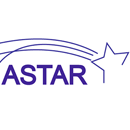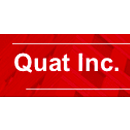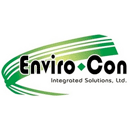In EPA Region 10, which encompasses Washington, Oregon, Alaska, Idaho and 271 Native Tribes, there have now been 17 lead-based paint disclosure violations regarding leases and rental property, with three being settled. Many landlords are unaware that they need to provide new tenants the EPA lead disclosure pamphlet and this is one of the most common violations nationwide.
Another area they covered was a situation that we receive a number of calls and questions about: the General Contractor/Subcontractor relationship. They clarified that if a General Contractor is subbing out work to Sub Contractors, both the General Contractor and Sub Contractors need to have their Lead Safe Firm Certification with the EPA or EPA-Authorized State (depending on where the work is being done). In one EPA Region 10 case, a subcontractor was not certified but the GC was, and after the initial investigation, they fined both the general contractor & sub for being non-compliant. Even if the subcontractor is Firm Certified, but fails to use a Certified Renovator on the job or their workers don't follow RRP practices, the GC could still be liable for fines. Ultimately, the GC is responsible for hiring certified subs AND making sure they are using RRP workers on the job site.
We also learned that there has been a recent push within EPA Region 10 to refer lead violation cases to the EPA Criminal Investigation Division (CID) if an EPA inspector receives a complaint that they feel is worthy of passing on to CID. This allows the EPA to take enforcement actions beyond civil fines, and could mean jail time for those found to be in violation.
Another area they covered was a situation that we receive a number of calls and questions about: the General Contractor/Subcontractor relationship. They clarified that if a General Contractor is subbing out work to Sub Contractors, both the General Contractor and Sub Contractors need to have their Lead Safe Firm Certification with the EPA or EPA-Authorized State (depending on where the work is being done). In one EPA Region 10 case, a subcontractor was not certified but the GC was, and after the initial investigation, they fined both the general contractor & sub for being non-compliant. Even if the subcontractor is Firm Certified, but fails to use a Certified Renovator on the job or their workers don't follow RRP practices, the GC could still be liable for fines. Ultimately, the GC is responsible for hiring certified subs AND making sure they are using RRP workers on the job site.
We also learned that there has been a recent push within EPA Region 10 to refer lead violation cases to the EPA Criminal Investigation Division (CID) if an EPA inspector receives a complaint that they feel is worthy of passing on to CID. This allows the EPA to take enforcement actions beyond civil fines, and could mean jail time for those found to be in violation.
Lastly, don't be surprised if you receive a call from your regional EPA office. In a new effort to get the word out about the RRP Rule and lead-safe practices, EPA representatives have been hitting the phones and contacting relevant businesses in their region to make sure they are aware of the rule's requirements, and are taking proper action. Some of these calls have turned into actual data requests for previous projects, so always make sure you are keeping up with your record-keeping for RRP jobs.




